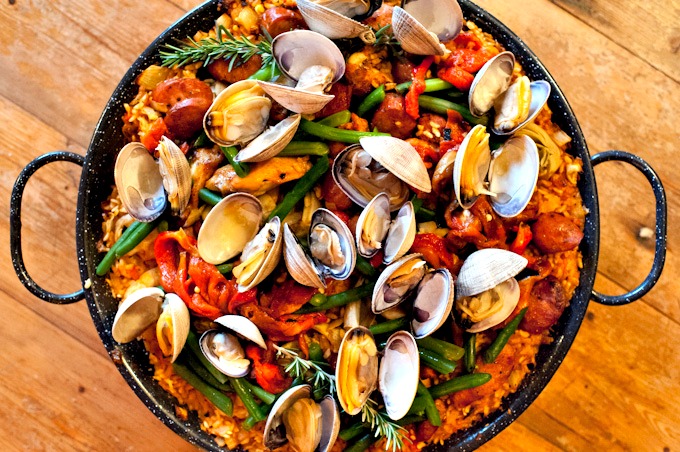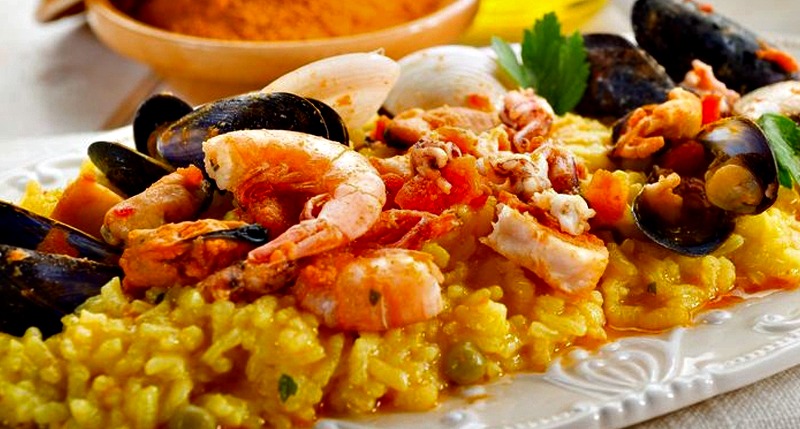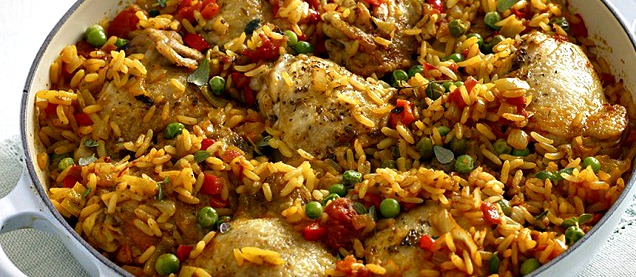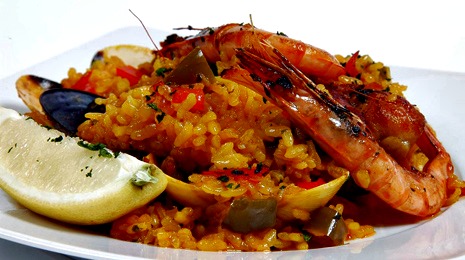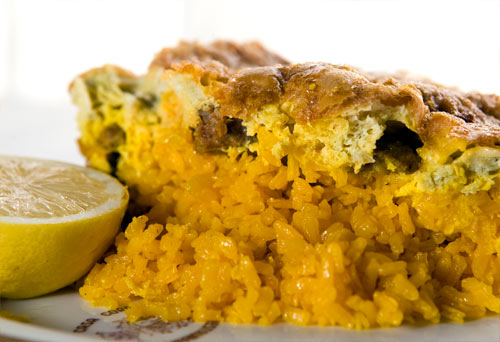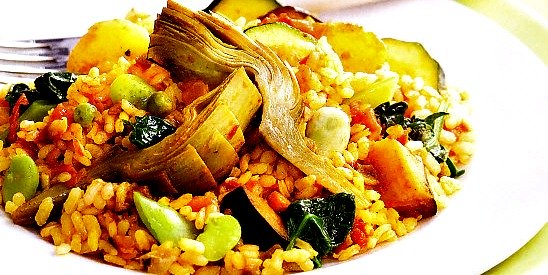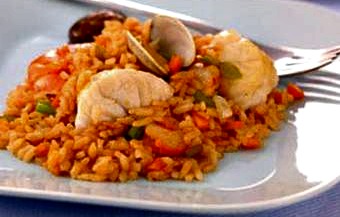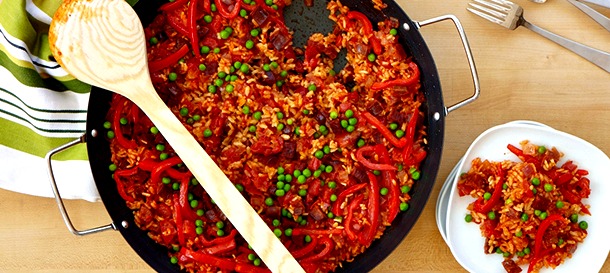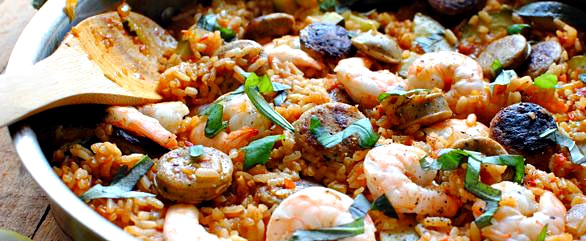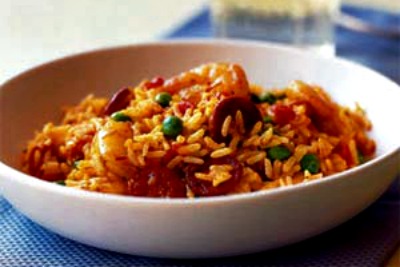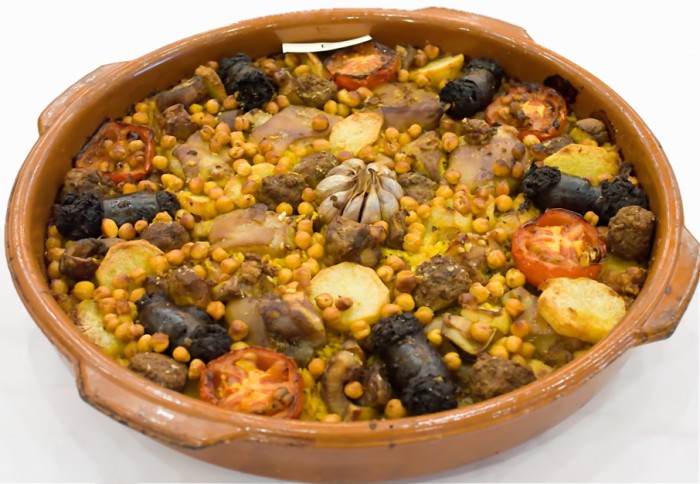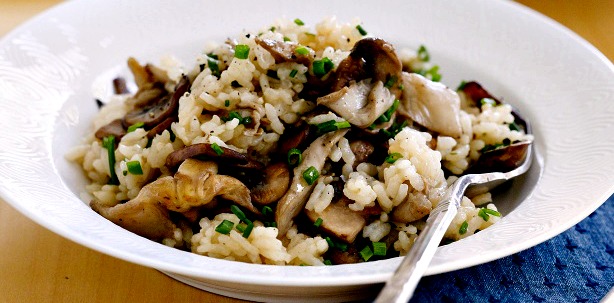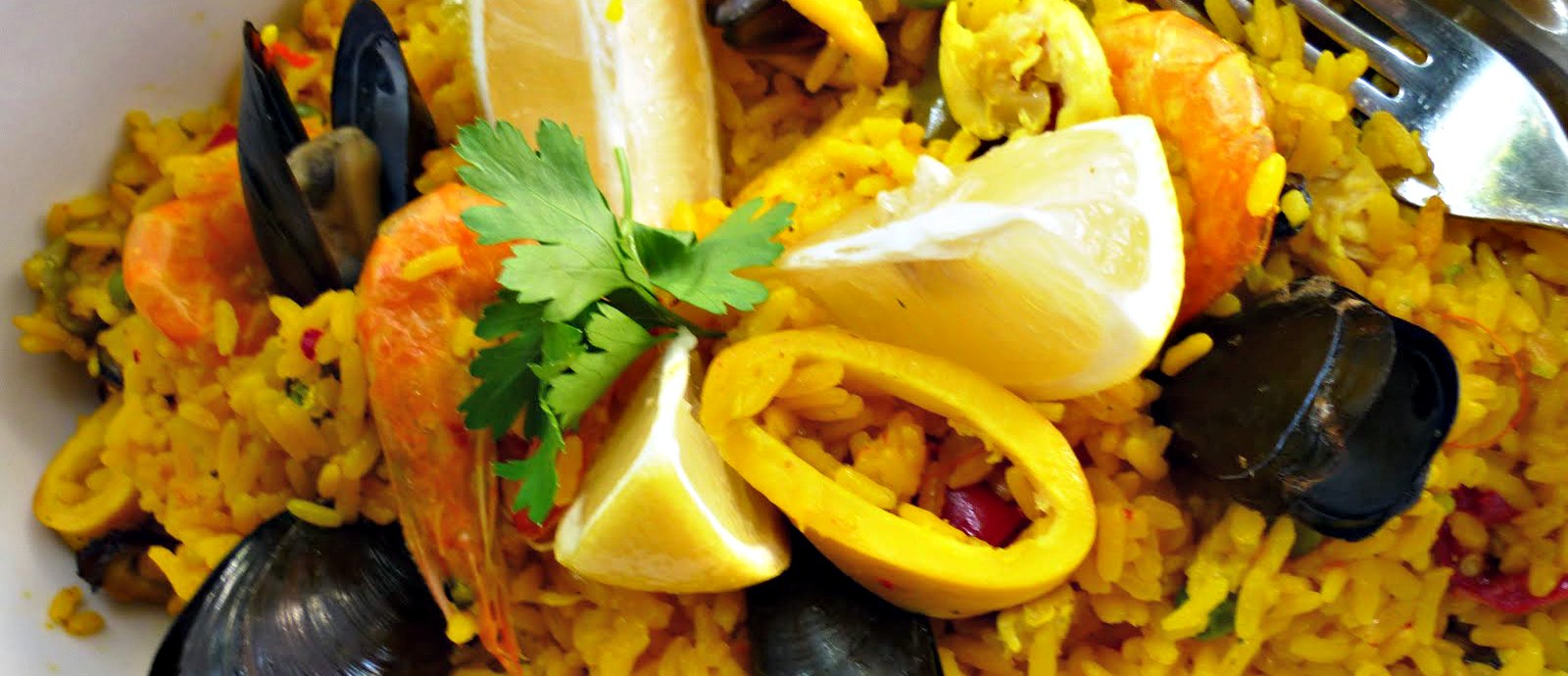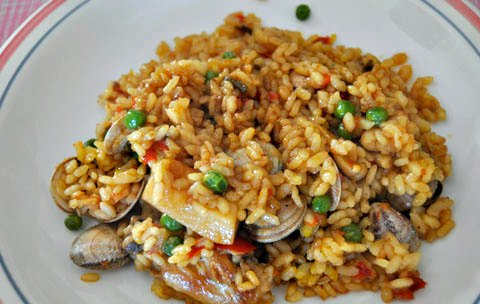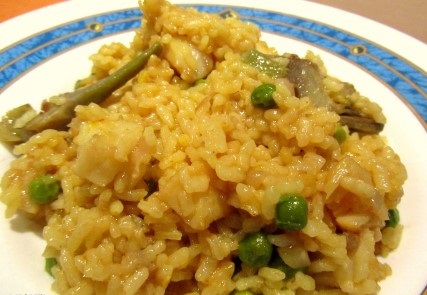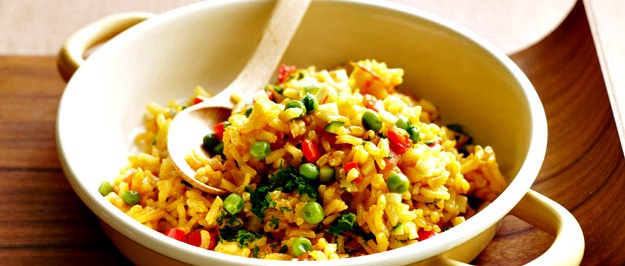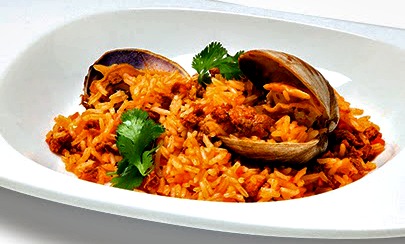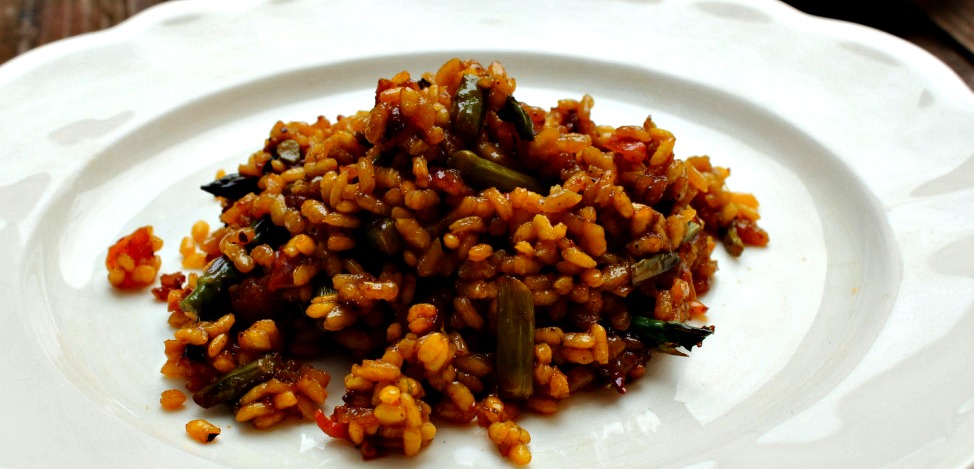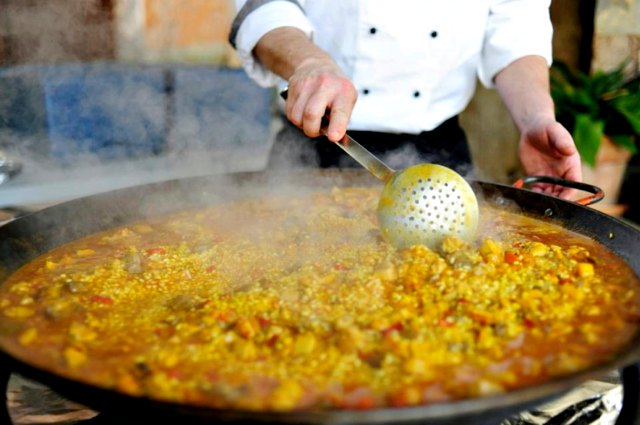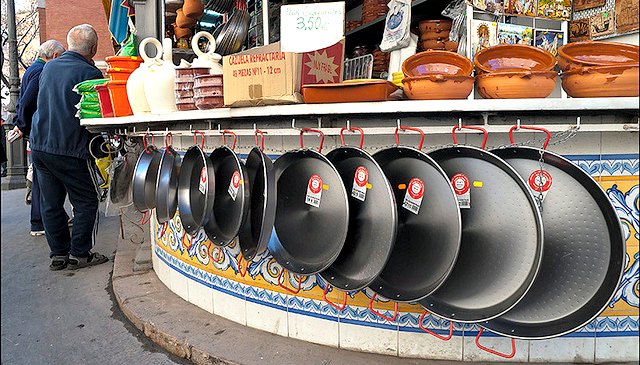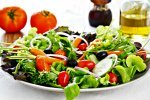PAELLA RECIPES
There are literally hundreds of paella recipes and every cook has their own favorite recipe. At Spain-recipes. com we've collected some of our favorite paella recipes, we recommend trying them all to discover the full variety of Spanish Paella!!!
Paella is a typical Spanish recipe and is traditionally cooked in a "paellera" - a round flat pan with two handles - which is then put on the table. It is normally made using shellfish but can also be made with chicken or rabbit. In many Spanish villages, especially in coastal areas, they use a giant paellera to cook a paella on festival days which is big enough to feed everybody.
A paella is very flexible so if you don't have the exact ingredients or if you find some of them hard to get hold of, substitute them for something similar. Getting fresh shellfish can be a problem, but you can always use frozen fish and use fish stock instead of water to increase the flavor.
If you're new to paella and don't know where to start, just check out our selection of paella starter kits and supplies.
Our paella recipes selection
Simple Paella: If you want an easy-to-do simple paella recipe, just knock on us... This is the easier paella recipe you can find anywhere!
Chicken Paella: This is the real Chicken Paella recipe, an alternate way of tasting authentic Spanish recipes.
Mixed Paella: This is the recipe that springs to mind to most people think of paella. While Valencia, the homeland of paella, rarely produces a paella mixing seafood with meat, this paella has caught the popular imagination outside Spain and tends to be the paella served in most Spanish-themed restaurants.
Arroz con costra (Crusty Rice with spare ribs and Chicken): This rice casserole is one of the signature dishes of Murcia, a region that excels in rice cookery.
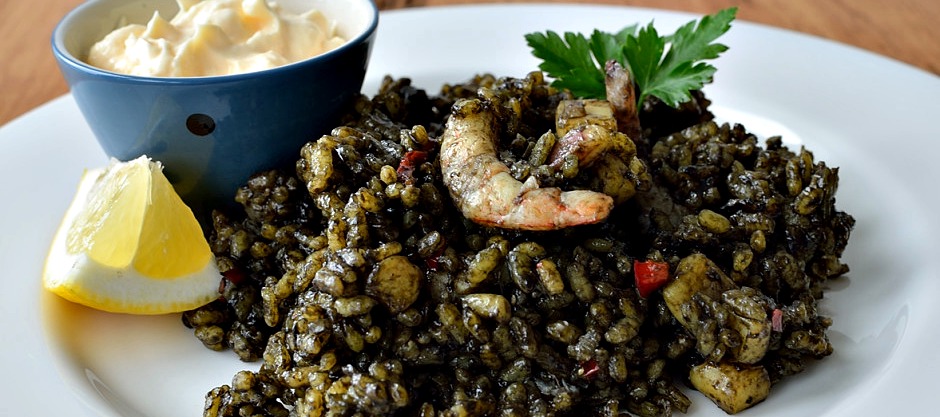
Arroz negro (black rice): Black rice (arroz negro) is popular along the entire Mediterranean coast of Spain, but specially in Castellon de la Plana, the extreme north of the Valencia Community, and in Tarragona, the most southern area of neighboring Catalonia.
Vegetarian Paella: This vegetarian paella is so moist, full of flavor, and substantial, that you will scarcely notice it is meat-free. The green, red, and yellow bell peppers add a vibrant splash of color to the pale rice, while the tangy artichoke hearts, delicate peas, and juicy tomatoes ensure that this vegetarian paella will satisfy even the most avid carnivores.
Catalan-Style Monkfish paella: Hailing from Catalonia, this paella features monkfish, which has gained in popularity in recent years. Prepared and cooked correctly, monkfish tastes like lobster. Here, the subtle flavor and tenderness of the monkfish add the perfect accents to the plump, juicy rice. A chilled white wine is the perfect accompaniment to this seafood paella
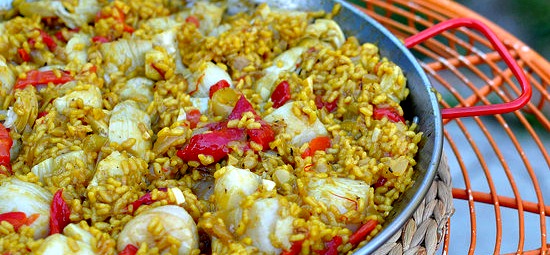
Chile and Scallop Paella: Roasted sweet red bell peppers, artichoke hearts, and green chilies lend this paella an interesting array of flavors, and contrast nicely with the mild taste of scallops.
Red paella: This colorful paella gets its name from the addition of paprika and red bell peppers, which flavor the rice. The sweetness of the roasted sweet red bell peppers in this recipe is the perfect counterpoint to the saltiness of the clams and aromatic pungency of the garlic. Filling but light, this paella leaves ample room for a creamy Spanish dessert.
Chicken and shrimp paella: An efficient and delicious way to feed a hungry family, this paella relies on condensed soup for its creamy flavor. The chicken and shrimp contrast nicely with the sweet bell peppers, and the delicately balanced herbs ensure that this paella will become an easy family favorite
Express Paella: Another recipe that uses a nontraditional paella method - the pressure cooker - to produce a meal quickly in an emergency. The guests that "just happened to drop by" will never guess that this flavorful paella was prepared in under 15 minutes.
Arroz al horno (Baked rice): This recipe is typical of home-cooking in the Marina Alta comarca in Alicante province--although you find slightly different versions all over Levante.
Mushroom Paella: Three varieties of mushrooms lend this exclusive mushroom paella recipe its distinctive taste and texture. Butter and Manchego cheese impart a creamy richness to the earthy rice, while the sherry, thyme, and basil add flavour and interest to the dish.
Squid Paella: in this paella, the delightful, true flavor of the squid shines through, and is subtly enhanced by the combination of rosemary, cumin, oregano, hot pepper flakes and sherry.
Arroz con Cebolla Confitada: Catalans like to mix seafood and meats, which they call mar y montaña (sea and mountain), and this dish, a specialty of the Bajo Ampurdán area, in Girona Province north of Barcelona, is an excellent example of that tradition. I first tasted it at Can Pep, a restaurant in the beautiful beach town of Calella de Palafrugell, and was immediately smitten. Like many other rice dishes from around the Mediterranean, this one is prepared in a cazuela, rather than in a paella pan.
Chilled Paella Curry: This paella recipe demonstrates how the dish may successfully use nontraditional ingredients. Here, the rice is made heavier with the generous use of sour cream and mayonnaise, which in turn provide a creamy balance to the artichokes, mushrooms, and stuffed olives.
Paella with clams, Serrano Ham, and Chorizo Sausage: Serrano ham is so adored by the Spanish that it is often served on its own, accompanied by nothing more than a glass of sherry. Savor it here as a flavorful accent to this scrumptious rice. If serrano ham is unavailable, the more readily available Italian prosciutto makes a good substitute.
Asparagus and Manchego Cheese Paella: Manchego is often savored alone or on a slice of bread. In this dish, the Manchego is grated and enhances the tenderness of the paella's shrimp and chicken. Parmesan can be used as an alternative to Manchego.
You may be also interested in...
See also
The secrets of paella: The authenticity of paella is gauged by the community it builds. What better way to enjoy your friends than to sit around the communal paella and share it together? Is that not what life is all about?
Which Paella pan should I use? After receiving many inquires on what are the right size and characteristics for a paella pan, we've made a bit of research, and retrieved some information on that issue. We usually use regular, 15-inches paella pan, but we've managed to find some other sizes also. So if you want to find out which paella pan size suits you best, just keep reading...
